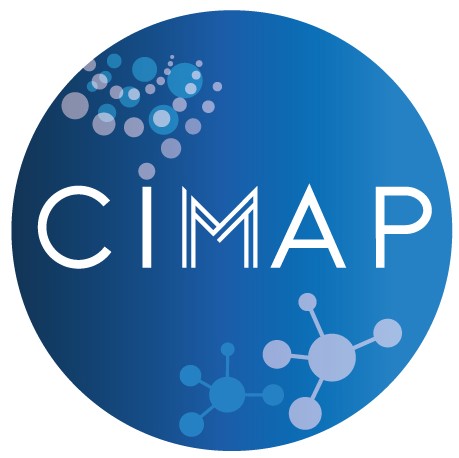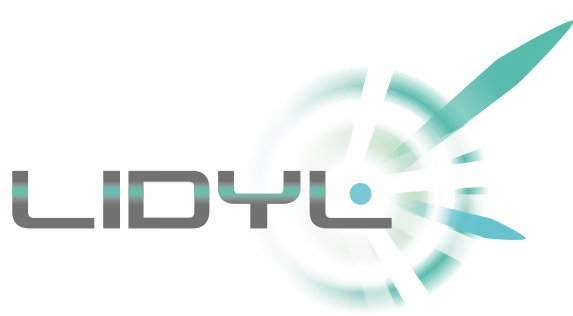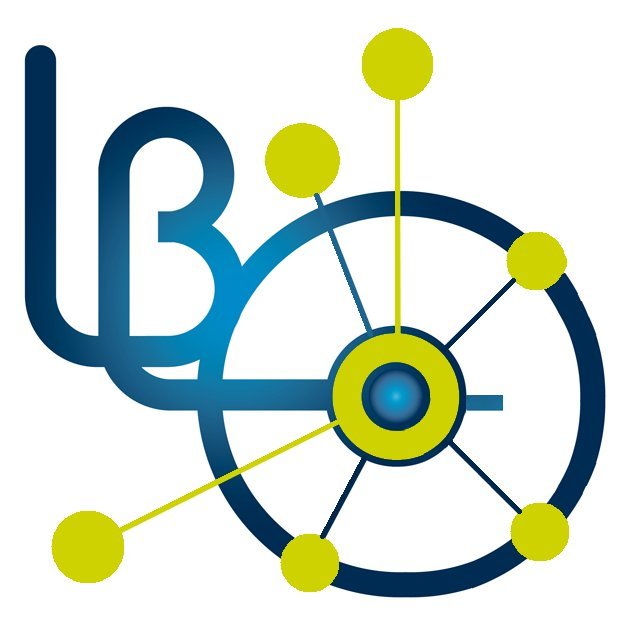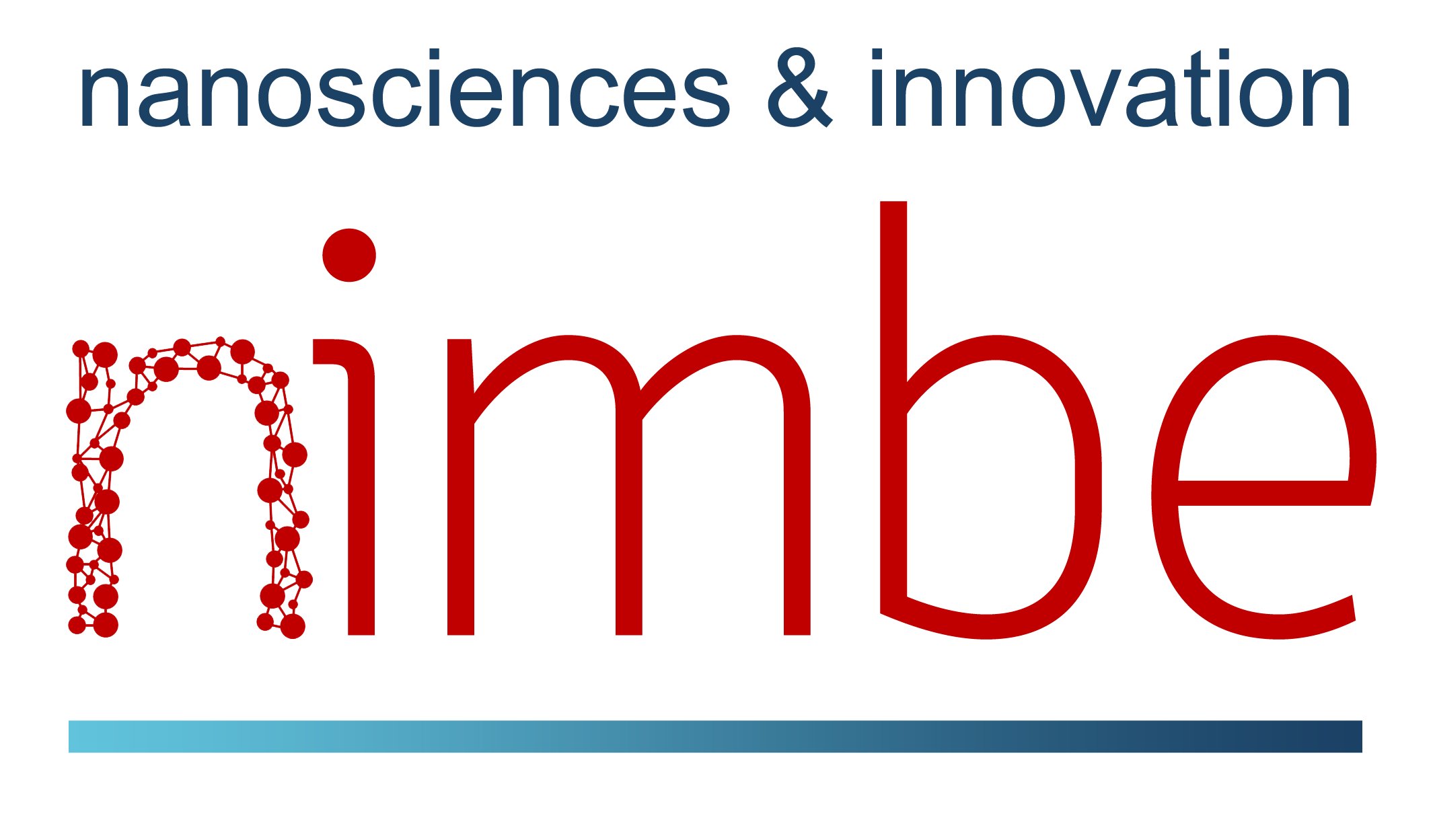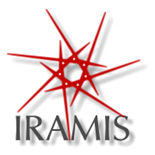PhD subjects
| 21 sujets IRAMIS/NIMBE |
Dernière mise à jour :
• Atomic and molecular physics • Electrochemical energy storage incl. batteries for energy transition |
• Physical chemistry and electrochemistry |
Photocatalytic deoxygenation of fatty esters: towards the production of biosourced alcanes
SL-DRF-24-0431
|
Contact : |
Starting date : 01-10-2024
| Contact : |
|
| Thesis supervisor : |
|
Personal web page : https://iramis.cea.fr/Phocea/Membres/Annuaire/index.php?uid=lanthore
Laboratory link : https://iramis.cea.fr/Pisp/thibault.cantat/
The aim of this thesis is to develop homogeneous catalytic systems for the photocatalytic deoxygenation of esters into the corresponding alkanes, by simple extrusion of a CO2 molecule. The energy required for the reduction reaction will be provided by light. Throughout this thesis project, the focus will be on developing catalytic systems and understanding reaction mechanisms through experimental studies (kinetics, NMR studies, observation of reaction intermediates, etc.) combined with theoretical chemistry (DFT calculations).
In situ and real time characterization of nanomaterials by plasma spectroscopy
SL-DRF-24-0388
|
Contact : |
Starting date : 01-10-2024
| Contact : |
|
| Thesis supervisor : |
|
Personal web page : https://iramis.cea.fr/Phocea/Membres/Annuaire/index.php?uid=mbriant
Laboratory link : https://iramis.cea.fr/nimbe/ledna/
Preliminary experiments conducted at LEDNA have shown the feasibility of such a project and in particular the acquisition of a LIBS spectrum of a single nanoparticle. Nevertheless, the experimental device must be developed and improved in order to obtain a better signal to noise ratio, to decrease the detection limit, to take into account the different effects on the spectrum (effect of nanoparticle size, complex composition or structure), to automatically identify and quantify the elements present.
In parallel, other information can be sought (via other optical techniques) such as the density of nanoparticles, the size or shape distribution.
Nano-object simulations in biological media
SL-DRF-24-0362
|
Contact : |
Starting date : 01-09-2024
| Contact : |
|
| Thesis supervisor : |
|
Personal web page : https://iramis.cea.fr/Phocea/Membres/Annuaire/index.php?uid=jrenault
Laboratory link : https://iramis.cea.fr/nimbe/lions/
Synthesis and properties of water-soluble graphene quantum dots
SL-DRF-24-0013
|
Contact : |
Starting date : 01-10-2024
| Contact : |
|
| Thesis supervisor : |
|
Personal web page : http://iramis.cea.fr/Pisp/stephane.campidelli/
Laboratory link : http://iramis.cea.fr/nimbe/licsen/
For many applications, one should be able to modify and control precisely the electronic properties of graphene. In this context, we propose to synthesize chemically graphene nanoparticles and study their absorption and photoluminescence properties. We will focus on their solubilty in water in order to study potential applications in biology. This project will be developed in collaboration with Physicists so the candidate will work in a multidisciplinary environment.
Catalytic cleavage of C-O and C-N bonds applied to the transformation or reductive depolymerization of waste plastics
SL-DRF-24-0379
|
Contact : |
Starting date : 01-10-2024
| Contact : |
|
| Thesis supervisor : |
|
Personal web page : https://iramis.cea.fr/Pisp/thibault.cantat/JeanClaude_Berthet.php
Laboratory link : https://iramis.cea.fr/Pisp/thibault.cantat/research.php
More : https://iramis.cea.fr/nimbe/LCMCE/
The aim of this project is to develop catalytic systems for depolymerizing oxygenated and nitrogenous plastics into their monomers or derivatives (alcohols, amines, halides or even hydrocarbons). These methods, which enable the carbonaceous matter in polymers to be recovered under mild conditions in the form of chemical products useful to the chemical industry, are still underdeveloped and will, in the future, be virtuous processing routes for recycling certain plastics.
The aim of this doctoral project is to develop and use new metal molecular complexes (aluminium, zirconium, rare earths, etc.) and organic catalysts (boron-based), which
- are simple, inexpensive, recyclable and more selective than current catalysts (composed of iridium, ruthenium and boron), to depolymerize different types of plastics (polyesters, polycarbonates, polyurethanes and polyamides),
- allow, in the case of reductive catalysis, the use of hydrosilanes and hydroboranes, as well as the use of new reducing agents acting by transfer hydrogenation routes.
Finally, we will also consider the use of organic anhydrides to transform plastics into reactive organic compounds useful in organic chemistry.
Hyperpolarised, continuous-mode NMR based on parahydrogen and grafted catalysts
SL-DRF-24-0590
|
Contact : |
Starting date : 01-10-2024
| Contact : |
|
| Thesis supervisor : |
|
Personal web page : https://iramis.cea.fr/Pisp/gaspard.huber/
Laboratory link : https://iramis.cea.fr/nimbe/
More : https://iramis.cea.fr/Pisp/104/stephane.campidelli.html
The present thesis will investigate the combined contribution of (i) parahydrogen-based hyperpolarisation [1], (ii) the grafting of the appropriate catalyst onto nanoparticles [2], and (iii) a continuous analysis method [3] to detect and identify chemical intermediates, areas in which the laboratory has acquired experience. This subject involves a major investment in instrumentation, as well as skills in synthetic chemistry and NMR.
The thesis will be carried out at NIMBE, a joint CEA/CNRS unit at CEA Saclay. The hyperpolarised NMR and the synthesis will take place under the respective responsibility of Gaspard HUBER, from LSDRM, and Stéphane CAMPIDELLI, from LICSEN. These two NIMBE laboratories are located in nearby buildings.
References:
[1] Barskiy et al, Prog. Nucl. Magn. Reson. Spectrosc. 2019, 33, 114-115,.
[2] Hijazi et al., Org. Biomol. Chem., 2018, 16, 6767-6772.
[3] Carret et al., Anal. Chem. 2018, 90, 11169-11173.
Porous materials integrated into devices for glycomic analysis in hospitals.
SL-DRF-24-0442
|
Contact : |
Starting date : 01-10-2024
| Contact : |
|
| Thesis supervisor : |
|
Personal web page : https://iramis.cea.fr/Phocea/Membres/Annuaire/index.php?uid=mmaleval
Laboratory link : https://iramis.cea.fr/NIMBE/LEDNA/
In this context, the LEDNA laboratory specialized in materials science has recently developed a sol-gel process for the manufacture of Hierarchical Porosity Monoliths (HPMs) in miniaturized devices. These materials have provided a proof of concept demonstrating their value for the second stage of glycomic analysis, i.e. the purification and extraction of oligosaccharides. The LEDNA is now looking to improve the first step, corresponding to enzymatic cleavage, which has become a limiting factor in the glycomics analysis process. Functionalization of porous materials, in particular HPMs, with enzyme would enable simple sample preparation in just a few hours with a single step.
The aim of this thesis is therefore to show that the use of porous materials with a dual function - catalytic and filtration - applied to the preparation of samples for glycomic analysis is a relevant means of simplifying and accelerating glycomic analysis, as well as employing them in hospital-related studies to identify new biomarkers of pathologies.
The research project will involve developing a device incorporating porous materials with catalytic and filtration functions. Several aspects will be addressed, ranging from the synthesis and shaping of these materials to characterization of their textural and physico-chemical properties. Particular emphasis will be placed on enzyme immobilization. The most promising prototype(s) will be evaluated in a glycomic analysis protocol, verifying the oligosaccharide profiles obtained from human biofluids (plasma, milk). Physico-chemical characterization will involve a variety of techniques (SEM, TEM, etc.), as well as characterization of porosity parameters (nitrogen adsorption, Hg porosimeter). Oligosaccharides will be analyzed by high-resolution mass spectrometry (mainly MALDI-TOF).
For this multidisciplinary thesis project, we are looking for a student chemist or physical chemist, interested in materials chemistry and motivated by the applications of fundamental research in the field of new technologies for health. The thesis will be carried out in two laboratories, LEDNA for the materials part and LI-MS for the use of materials in glycomics analysis. The research activity will be carried out at the Saclay research center (91).
Novel membranes based on 2D nanosheets
SL-DRF-24-0510
|
Contact : |
Starting date : 01-03-2024
| Contact : |
|
| Thesis supervisor : |
|
Personal web page : https://iramis.cea.fr/Pisp/jean.gabriel/
Laboratory link : https://iramis.cea.fr/nimbe/licsen/
More : https://iramis.cea.fr/nimbe/
For the realization of the latter, he will have access to a very wide and varied range of equipment ranging from optical microscopes to the latest generation synchrotron (ESRF), including field effect or electron microscopes and galvanostats.
This thesis is therefore an excellent opportunity for professional growth, both in terms of your knowledge and your skills.
In situ Magic Angle spinning NMR analysis of Li-ion batteries
SL-DRF-24-0325
|
Contact : |
Starting date : 01-10-2024
| Contact : |
|
| Thesis supervisor : |
|
Personal web page : https://iramis.cea.fr/nimbe/Pisp/magali.gauthier/
Laboratory link : https://iramis.cea.fr/nimbe/LEEL/
Development of dense and fluidized granular beds in microfluidic channels for healthcare applications
SL-DRF-24-0399
|
Contact : |
Starting date : 01-10-2024
| Contact : |
|
| Thesis supervisor : |
|
Personal web page : https://iramis.cea.fr/nimbe/Pisp/florent.malloggi/
Laboratory link : https://iramis.cea.fr/en/Pisp/lions/
Numerical twin for the Flame Spray Pyrolysis process
SL-DRF-24-0402
|
Contact : |
Starting date : 01-10-2024
| Contact : |
|
| Thesis supervisor : |
|
Personal web page : https://iramis.cea.fr/nimbe/Phocea/Membres/Annuaire/index.php?uid=leconte
Laboratory link : https://iramis.cea.fr/nimbe/leel/
Advanced 3D-printed metallic bipolar plates for PEMFC application
SL-DRF-24-0244
|
Contact : |
Starting date : 01-10-2024
| Contact : |
|
| Thesis supervisor : |
|
Personal web page : https://iramis.cea.fr/nimbe/Phocea/Membres/Annuaire/index.php?uid=MF276647
Laboratory link : https://iramis.cea.fr/nimbe/LICSEN/
Ab initio simulation of catalysts for green chemistry
SL-DRF-24-0302
|
Contact : |
Starting date : 01-10-2024
| Contact : |
|
| Thesis supervisor : |
|
Personal web page : https://iramis.cea.fr/Pisp/rodolphe.pollet/
Laboratory link : https://iramis.cea.fr/nimbe/lsdrm/
During this thesis, the student will learn how to perform ab initio molecular dynamics simulations coupled with a method which can reconstruct the free-energy landscape of the hydration reaction for different aromatic nitriles in different in silico experimental conditions. He or she will also have to perform quantum chemistry calculations at a level that can describe all the required intra and intermolecular interactions. This theoretical approach has already been successfully used within our team to describe other chemical reactions in aqueous solution and will be applied to the innovative field of green chemistry.
Hybrid solid electrolytes for "all-solid" batteries: Formulation and multi-scale characterization of ionic transport
SL-DRF-24-0634
|
Contact : |
Starting date : 01-10-2024
| Contact : |
|
| Thesis supervisor : |
|
Personal web page : http://iramis.cea.fr/Pisp/said.yagoubi/
Laboratory link : http://iramis.cea.fr/nimbe/leel/
More : http://iramis.cea.fr/nimbe/lsdrm/
However, the intrinsic instability of liquid electrolytes results in safety issues. Faced with the requirements concerning the environment and safety, solid-state batteries based on solid electrolytes can provide an effective solution while meeting battery energy storage needs. The barriers to overcome allowing the development of all-solid-state battery technology consist mainly in the research of new chemically stable solid electrolytes with good electrical, electrochemical and mechanical performance. For this goal, this thesis project aims to develop “polymer/polymer” and “ceramic/polymer” composite solid electrolytes with high performance and enhanced safety. Characterizations by electrochemical impedance spectroscopy (EIS) will be carried out in order to understand the cation dynamics (by Li+ or Na+) at the macroscopic scale in composite electrolytes, while the local dynamics will be probed using advanced techniques of Solid-state NMR (23Na / 7Li relaxation, 2D NMR, in-situ NMR & operando). Other characterization techniques such as X-ray and neutron diffraction, XPS, chronoamperometry, GITT ... will be implemented for a perfect understanding of the structure of electrolytes as well as aging mechanisms at the electrolyte / electrolyte and electrolyte/electrode interfaces of the all-solid battery.
Key words: composite solid electrolyte, all-solid-state battery, interfaces, multiscale characterization, dynamics of Li + and Na + ions, electrochemical performance, solid-state NMR, X-ray / neutron diffraction.
Nanodiamond-based porous electrodes: towards photoelectrocatalytic production of solar fuels
SL-DRF-24-0426
|
Contact : |
Starting date : 01-10-2024
| Contact : |
|
| Thesis supervisor : |
|
Personal web page : https://iramis.cea.fr/nimbe/Phocea/Membres/Annuaire/index.php?uid=jarnault
Laboratory link : https://iramis.cea.fr/nimbe/ledna/
Catalysis using sustainaBle hOllow nanoreacTors wiTh radiaL pErmanent polarization
SL-DRF-24-0284
|
Contact : |
Starting date : 01-10-2024
| Contact : |
|
| Thesis supervisor : |
|
Personal web page : https://iramis.cea.fr/Phocea/Membres/Annuaire/index.php?uid=ppicot
Laboratory link : https://iramis.cea.fr/NIMBE/LIONS/
This phD project aims to study the whole family (nanotube, nanosphere, and nanotile, with various functionalizations) as nanoreactors for reduction reactions of protons and CO2 triggered under irradiation.
Multiscale metamaterials based on 3D-printed biosourced polymer composites
SL-DRF-24-0326
|
Contact : |
Starting date : 01-10-2024
| Contact : |
|
| Thesis supervisor : |
|
Personal web page : https://iramis.cea.fr/Pisp/valerie.geertsen/
Laboratory link : https://iramis.cea.fr/nimbe/lions/
The PhD-thesis proposed here focuses on the development of polymeric nanocomposite microlattice structures from resin formulation to mechanical properties study (viscoelasticity, yield stress, fracture resistance) through printing and post-processing stages. From a more fundamental point of view, the aim is to study the link between the composition, shape and surface properties of the fillers on one hand, and the imprimability of the composite resine and the mechanical properties of the resulting metamaterial on the other hand. The thesis will focus on the study of cellulose-type fillers in nanoparticle, microparticle or fiber form. This multidisciplinary study bridges technology to science while producing data for a digital twin.
Effect of substitution on the ferroelectric and photocatalytic properties of Barium Titanate nanoparticles
SL-DRF-24-0401
|
Contact : |
Starting date : 01-10-2024
| Contact : |
|
| Thesis supervisor : |
|
Personal web page : https://iramis.cea.fr/nimbe/Phocea/Membres/Annuaire/index.php?uid=leconte
Laboratory link : https://iramis.cea.fr/nimbe/leel/
Custom synthesis of diamond nanoparticles for photocatalytic hydrogen production
SL-DRF-24-0432
|
Contact : |
Starting date : 01-10-2024
| Contact : |
|
| Thesis supervisor : |
|
Personal web page : https://iramis.cea.fr/Phocea/Membres/Annuaire/index.php?uid=hgirard
Laboratory link : https://iramis.cea.fr/NIMBE/LEDNA/
The aim of this PhD is to develop a bottom-up approach to nanodiamond synthesis using a sacrificial template (silica beads or fibers) to which diamond seeds < 10 nm are attached by electrostatic interaction. The growth of diamond nanoparticles from these seeds will be achieved by exposing these objects to a microwave-enhanced chemical vapor deposition (MPCVD) growth plasma, allowing very fine control of (i) the incorporation of impurities into the material (ii) its crystalline quality (sp2/sp3 ratio) (iii) its size. This growth facility, which exists at the CEA NIMBE, is used for the synthesis of boron-doped diamond core-shells [4]. In the second part of the thesis, an innovative process (patent pending) is implemented to achieve MPCVD growth of diamond nanoparticles by circulating the sacrificial templates in a gas stream. During this work, different types of nanodiamonds will be synthesized: intrinsic nanoparticles (without intentional doping) and nanoparticles doped with boron or nitrogen.
After growth, the nanoparticles will be collected after dissolution of the template. Their crystal structure, morphology and surface chemistry will be studied at CEA NIMBE by scanning electron microscopy, X-ray diffraction and Raman, infrared and photoelectron spectroscopy. A detailed analysis of the crystallographic structure and structural defects will be carried out by high-resolution transmission electron microscopy.
Nanodiamonds will then be surface-modified to give them colloidal stability in water. Their photocatalytic performance for hydrogen production will be evaluated in collaboration with ICPEES (Strasbourg University).
References
[1] Patent, Procédé de production de dihydrogène utilisant des nanodiamants comme photocatalyseurs, CEA/CNRS, N° FR/40698, juillet 2022.
[2] Miliaieva et al., Nanoscale Adv. 2023.
[3] Buchner et al., Nanoscale (2022)
[4] Henni et al., Diam. Relat. mater. (under review)
Exploring the reactivity of oxide based catalysts by radiolysis
SL-DRF-24-0239
|
Contact : |
Starting date : 01-10-2024
| Contact : |
|
| Thesis supervisor : |
|
Personal web page : https://iramis.cea.fr/Pisp/sophie.le-caer/
Laboratory link : https://iramis.cea.fr/nimbe/LIONS
More : https://iramis.cea.fr/nimbe/LEDNA
However, photocatalysis kinetics can be slow, and it can take a long time to identify the best catalysts or catalyst/reagent pairs for a given reaction. So, in order to determine whether radiolysis, which relies on the use of radiation to ionize matter, can be an effective method of screening catalysts, initial experiments have already been carried out on catalyst (TiO2 or Cu TiO2)/reagent (propionic acid more or less concentrated) pairs, previously studied in photocatalysis. Initial results obtained by radiolysis are encouraging. In these experiments, only dihydrogen production was measured. A significant difference was observed in this production depending on the system: it was high during radiolysis of propionic acid with TiO2 nanoparticles, and significantly lower in the presence of Cu TiO2 nanoparticles, suggesting a different reaction path in the latter case, in line with observations made during photocatalysis experiments.
The aim of this thesis work will be to extend these initial results by synthesizing nanoparticles (catalysts), preparing reagent/catalyst mixtures, then irradiating them and measuring the various gases produced by gas-phase micro-chromatography, with special attention on ethylene. Particular attention will be paid to determining the species formed, especially transient ones, in order to ultimately propose reaction mechanisms accounting for the differences observed for the different reagent/catalyst pairs. Comparisons will also be made with results obtained by photocatalysis.
Raw earth soil, an age-old material with new emerging uses
SL-DRF-24-0360
|
Contact : |
Starting date : 01-09-2024
| Contact : |
|
| Thesis supervisor : |
|
Personal web page : https://iramis.cea.fr/Phocea/Membres/Annuaire/index.php?uid=jrenault
Laboratory link : https://iramis.cea.fr/nimbe/lions/
More : https://www.icsm.fr/index.php?pagendx=3898
This thesis focuses on the link between the mechanical properties of raw earth soil materials and their nanostructure, emphasizing the roles of confined water, ions and organic substances. Two approaches, based on the expertise on nanoporous media developed at CEA, Saclay and Marcoule, will be followed: the analysis of old materials using spectroscopic and radiation scattering methods, and the development of a screening protocol to identify physicochemical parameters important for durability. This research, which ultimately aims to optimize the formulation of raw earth materials, will be carried out in collaboration with architects specialists in the field.

